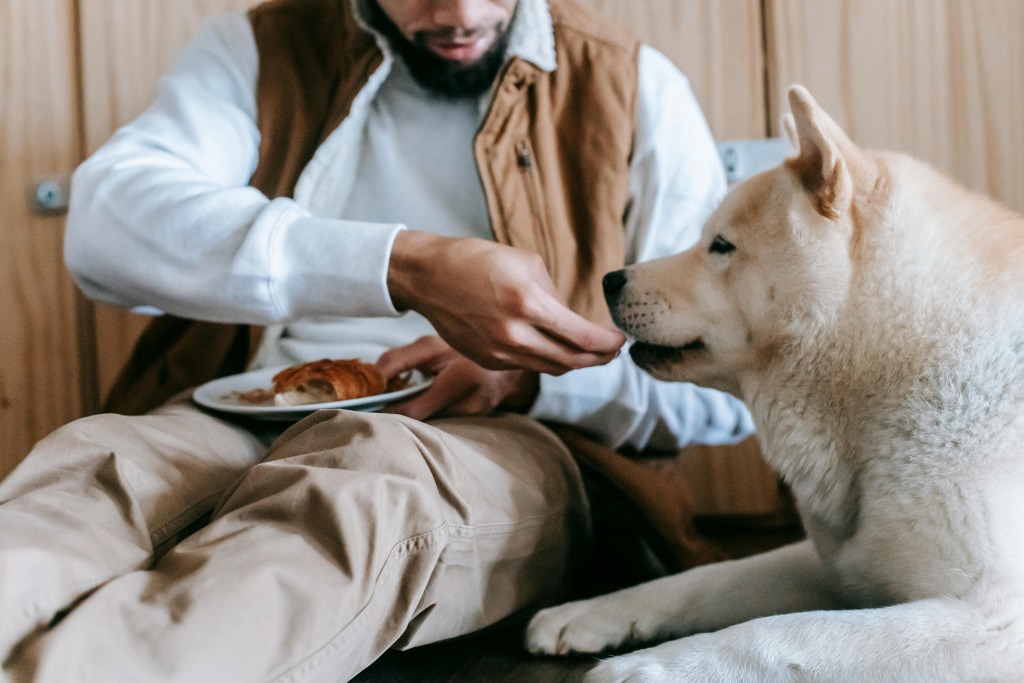
A wagging tail can hide a lot, especially when your dog spends hours at your feet during long gaming sessions or sprints down apartment hallways for a burst of energy.
Some digestive issues slip by unnoticed, even for alert pet owners.
But your active dog deserves more than just quick meals and a casual glance at the water bowl. Spotting the subtle signs early makes a real difference.
Read on to see which habits and symptoms matter for the energetic breeds that grace our tech-filled homes.
1. A Sudden Change in Appetite
The bowl you served in the morning wasn’t touched by lunchtime? Dogs who normally eat with enthusiasm may skip meals when their stomach feels off.
Skipping food, hovering over the bowl, or suddenly gulping water without eating often signals digestive stress. Appetite loss often starts before other signs appear.
2. Hard Stool or Trouble Defecating
Has your canine friend been straining during walks or leaving behind dry, crumbly stools? That signals issues with hydration, fiber, or gut bacteria.
Apartment life and variable exercise can disrupt digestion too.
However, small changes like adding more fiber in their diet can fix it. And alongside this, a dog prebiotic supplement offers gentle support for easier, more regular bathroom trips.
3. Increased Gas or Stomach Noises
Some degree of flatulence is considered normal in dogs.
But gut balance may be off if you notice:
– Louder gurgles
– More frequent passing of gas
– Or discomfort after meals
Often, sudden changes in diet, treats, or stress from noisy indoor activity can set off digestive upsets and extra gas.
4. Unusual Lethargy after Meals
Your usually energetic pup curls up and avoids play after eating? Dogs may slow down if their body struggles to process food.
Common energy sappers:
- Heavy meals
- New foods
- Digestive discomfort
A noticeable drop in post-meal activity often points to underlying stomach or gut problems.
5. Vomiting or Regurgitation
When your pooch is tossing up meals or water, the gut signals distress. Food sensitivities, fast eating, or stress from feeding a picky pet all contribute.
Repeated vomiting, especially right after eating, points to irritation or a blockage. Even one episode means a closer look at diet and routines.
6. Excessive Licking or Grass Eating
Your dog turned herbivore? Constant licking at paws, the air, or chewing grass excessively can hint at belly troubles.
Dogs sometimes use these habits to ease queasiness or discomfort. If grass munching becomes persistent or licking feels obsessive, it may be time to adjust food or routines.
7. Inconsistent Eating Patterns
Some days your dog cleans the bowl, other days barely sniffs it. Shifts in daily routine, stress from noise, or subtle gut discomfort often explain this pattern.
Erratic eating can indicate a slow-building digestive issue, especially in dogs used to regular, structured meal times.
8. Bad Breath Not Related to Teeth
Not all smelly dog breath comes from dirty teeth.
- Digestive upsets,
- Poor gut health,
- Or food sitting too long in the stomach
All these can leave a lasting odor.
Indeed, canine bad breath can stem from many causes. But lingering funk after dental care points to possible trouble further down the tract.
9. Scooting or Frequent Butt Licking
Scooting across the floor or obsessively licking the rear can indicate digestive strain. Irritated glands or gut imbalances make dogs search for relief in weird ways.
This habit signals that something inside feels off, often before more obvious signs show up in their routine.
10. Frequent Need to Go Out at Night
Has your canine fellow been begging for late-night walks, perhaps even amidst your nightly game together? Extra bathroom trips often signal irritated bowels or a struggling gut.
When a dog suddenly can’t hold it until morning, look for:
- Food sensitivities,
- Anxiety,
- Or hidden digestive discomfort affecting their schedule.
Subtle shifts in your dog’s daily routine can reveal more about their digestive health than you’d expect. Keen observation and small adjustments create comfort for both furry pal and owner. Noticing patterns now supports a healthier, happier life side by side.























